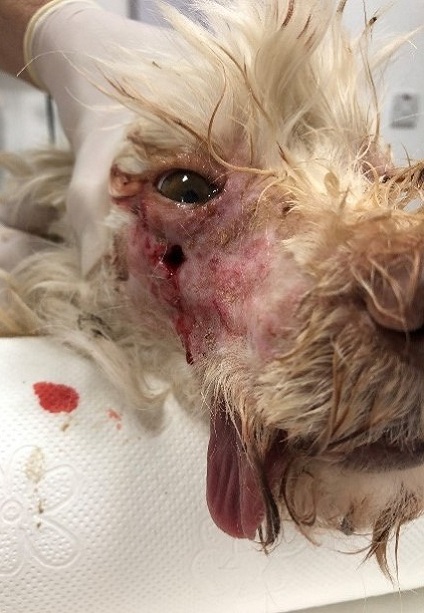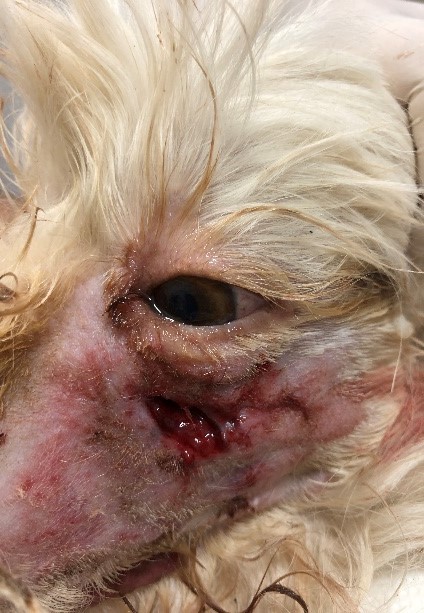Case of the Month - August 2022
Treatment of Temporomandibular Ankylosis in a Cat with Unilateral Condylectomy
This month's case was a male mixed cat "Lucky", which we think is about 1.5 years old. In the anamnesis taken from the patient's owner, it was learned that the cat was a stray cat taken care of in the school garden. He could not open his mouth fully for about one month and could not eat his food, so he was fed with wet food. The patient’s owner reported that he was brought to our hospital when it was seen that he was weakened because he could not be fed and that his mouth could not be opened when he tried to open it.
Case of the Month - Janruary 2022
A CASE OF INTESTINAL LYMPHOMA IN A DOG
History:
Our case this month is a 6 years old, male, husky breed dog named "Hatchi". In the history taken from the patient's owner, it was learned that the dog hunched and took a position while defecating for about 3 months, but he had difficulty in defecation and pain (dyschezia), and sometimes he wasn’t able to defecate at all. In addition, when the animal was straining, the presence of an irregular and bleeding mass protruding out of the anus, approximately the size of a walnut, was noticed, and the dog was brought to our hospital.
Case of the Month - October 2021
History
This month's case is a 4-month-old male Yorkshire terrier dog named “Odin”. Information obtained from the patient owner, revealed that the dog had been vaccinated in a private veterinary clinic. Later complaints of moaning and pain were observed after the vaccination, and symptomatic treatment was initiated in form of painkillers in the same clinic. The dog responded to the treatment for 2 days, but the symptoms recurred. The dog was referred with signs of incoordination to our hospital after the symptoms worsened during the next 2 weeks.
Case of the Month - May 2021
Anamnez
A 13-year-old male Terrier dog ('Caramel') was presented to our hospital with complaints of difficulty and irritability while eating and bilateral wounds under his eyes for 3 years. It was learned that the wounds did not heal despite treatment and recurred at 4-month intervals.

